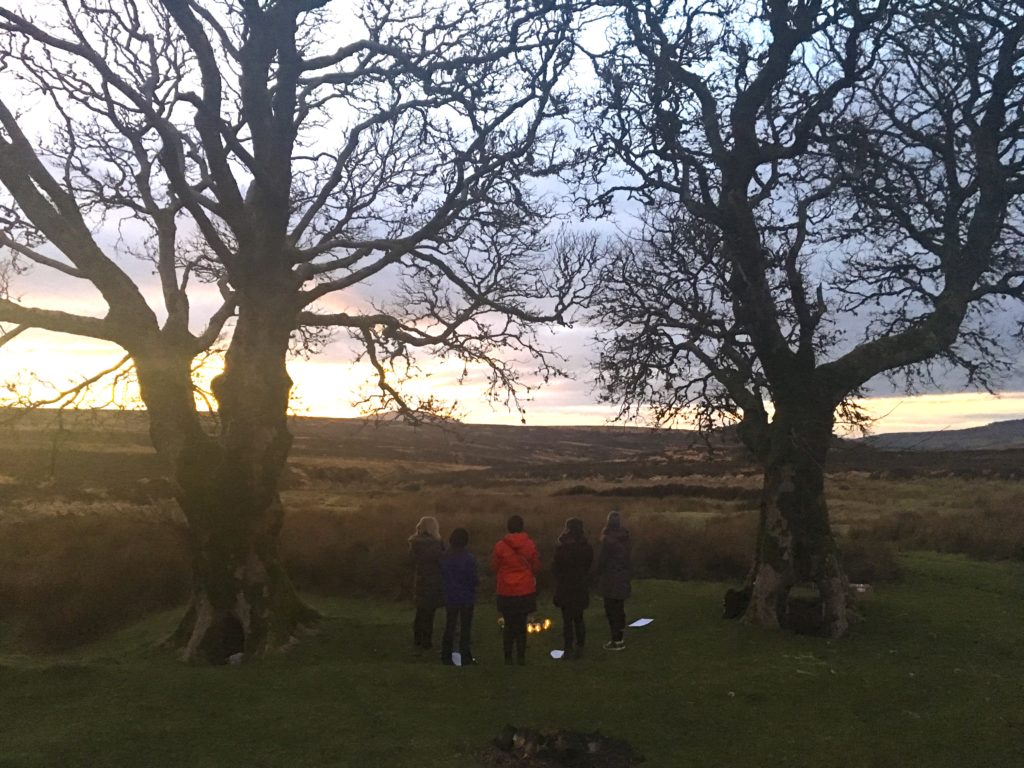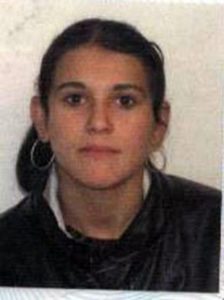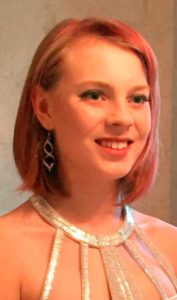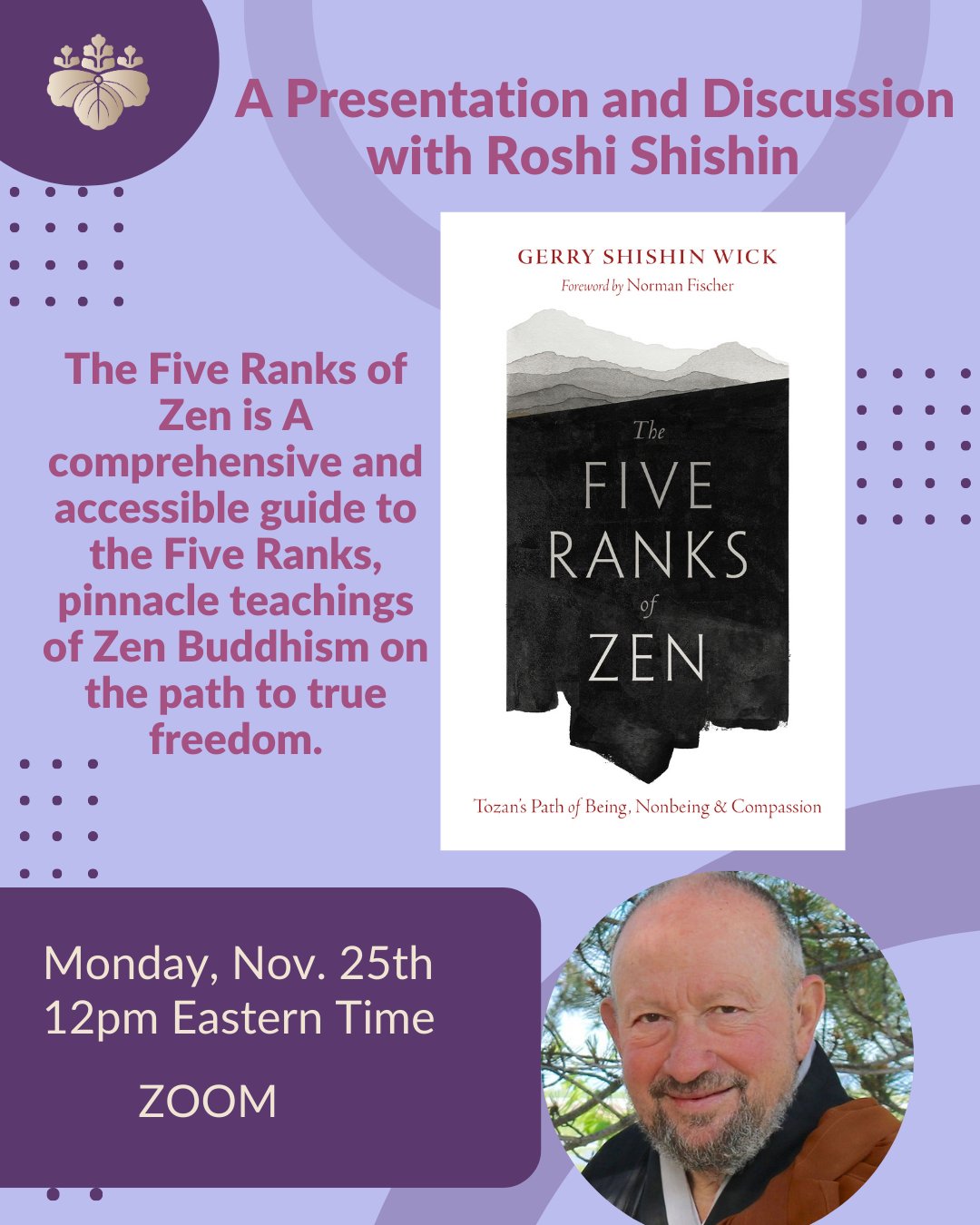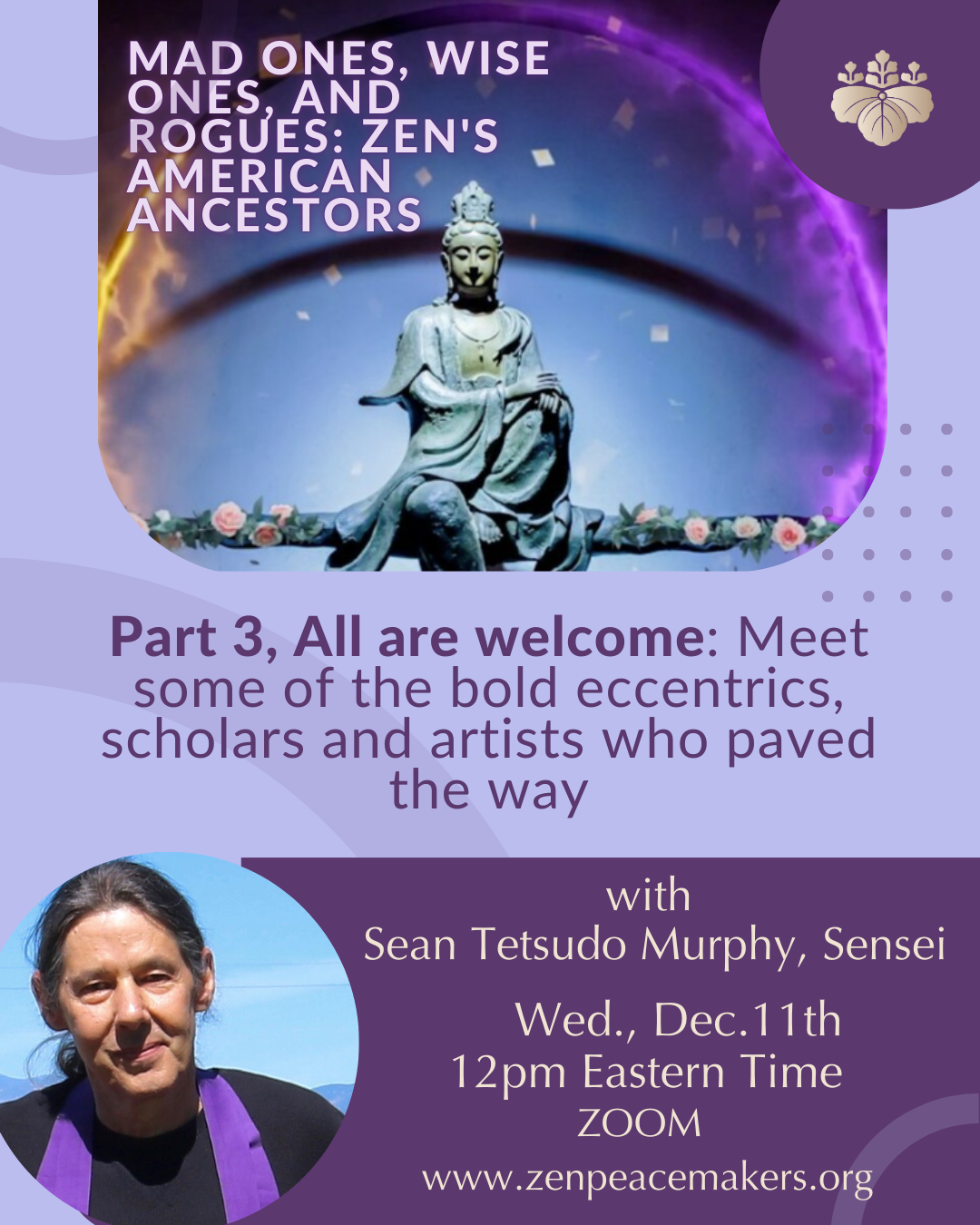KIPPURE, IRELAND. Niamh Barrett, impacted by the injustices of sexual violence against female body, both current and historically, felt called to provide space to commemorate those who were harmed, to support discussion around the sensitive topic. What follows is Niamh’s personal reflection discussing a particular emotive event that offered her the necessary ‘ingredients’ to host a Bearing Witness Retreat honoring women in Kippure, Ireland.
Nollaig na mBan is Irish for Women’s Christmas and it takes place on January 6th. It’s the day on which, historically (whether it actually happened or not), the women and girls of the Irish household were to rest and be waited upon, after their hard labour over the Christmas festive period. It’s now become a day to celebrate and remember women.
January 6th was also the day in 2008 that a young Roma gypsy girl was abducted while begging in Dublin City. Her name was Marioara Rostas and she was 18. On January 23rd, 2012, her body was discovered buried in a forest in the Dublin mountains. When I first heard this story, it lit something in me which would not be extinguished over the following years. About one-in-five women in Ireland have experienced sexual violence, which supposedly is much more. Learning this and what happened to Marioara had caused a new depth of shock and alarm in me.
Marioara (photo to left) was young – she looked younger than her 18 years. She was poor, she was newly-arrived in Ireland and she spoke virtually no English. Begging on a city street in January with her brother, she was hungry—she got into a sleek silver car on a pretext of being taken to McDonald’s while her brother was given ten euros and reassured that Marioara would be brought back to him. He never saw her again. She was taken to an apartment in the city where, for a number of days, she experienced extreme violence before being shot and killed. I felt deeply compelled to respond to what happened to Marioara, and not to simply retell the story of the violence that she experienced, but rather to find a way that wouldn’t risk sensationalism or stir up more trauma. Although, for years I didn’t know how.
By way of attending Roshi Robert Kennedy’s retreats in Dublin, over the following years I encountered Zen Peacemakers and Roshi Bernie’s teachings. I took part in the plunges of street retreat and the Zen Peacemakers’ Auschwitz retreat and was immersed in beautiful and meaningful ways of bearing witness to terrible suffering. I realised that creating a plunge could be a way to commemorate Marioara, and to include others. Because of the resonances for Irish women with Nollaig na mBan, and because it was the day on which Marioara was abducted, I planned a plunge for Sunday, January 6th. As soon as I began to act on this intention, it became a kind of magnet towards which the elements I needed were drawn. I experienced this as findings, or being offered, the necessary ‘ingredients’- how I had come to understand what Roshi Bernie wrote in his book Instructions to the Cook.
Marioara’s body was found in a forest on the border of counties Dublin and Wicklow, in a place called Kippure. Kippure is the name of a mountain, and the area which surrounds it covers a large region of forest which opens up into a vast panoramic landscape of gentle hills and huge sky in a area called the Sally Gap. Kippure and the Sally Gap are often associated with people, specifically women, who are missing, and feared murdered. For these reasons I chose this place to have a ceremony of remembrance. On street retreat in Helsinki with Roshi Frank De Waale, I had appreciated the learning we received from people who were working in the field of homelessness. What they shared with us helped me to bear witness and so I planned to invite someone from the Women’s Aid domestic violence awareness charity to come and speak with us on our plunge day. I discovered that they published an annual report called Femicide Watch. Inside this report there was an appendix titled In Memoriam, where the names of all women murdered, or missing and feared murdered, had been recorded since 1996 when such records began. There were 226 names in this appendix, including Marioara’s. I saw that we needed to bear witness to all of these lives and deaths. 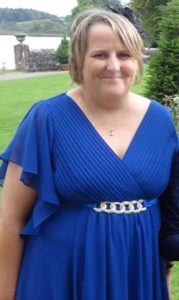
(Left: Elaine O’Hara a woman commemorated as part of the Bearing-Witness ceremony in Kippure, Ireland.)
I spent the evening of January 5th preparing the list. I remembered that during a ceremony at the tracks at Auschwitz-Birkenau, when I heard Roshi Genro including the ages of the people who had been killed there, that they felt closer to me, more real. So I compiled the «In Memoriam» information according to name and age, and deleted the references to the place that each woman or girl was from, and the person held responsible for their death, which was outlined in general terms, such as male relative/ex-partner/partner/ stranger, and in some cases, no-one held responsible. The eldest of these women, Mary Molumby, was 86 and the youngest , Jamie Farrelly Maughan and Alison White, were girls of 13. Women at every stage of life in between were here. Including the children who were murdered alongside their mothers, the youngest, Amy Hines, was five months. This preparation felt like more to me than just cutting text from a word document. It was careful work, handling the details of these women and girls. It felt like a laying out of each life. As I came to the age of each person I sensed her lifespan and how it might have been reflected in her body and her face – in youthful, open animation, or in a more inward, reflective stillness. The preparation of the list was for me the most intimate part of the plunge.
I wrestled with the consideration of how, or whether I should, invite men to take part. Being in partnership with men in all areas of life is important and healing for me and I’ve been very encouraged by way of Zen Peacemakers’ emphasis on partnership between men and women. So I wanted to include men in the plunge, but didn’t know if I could trust myself to respond skillfully should a male participant- whether consciously or unconsciously- try to dominate at any point. A friend advised me that perhaps a way to do it would be to make the council at the day’s end just for women, which is how I proceeded. No men signed up and I understand why. You’re welcome and you’re in, or you’re not. No holding back. And if it’s to be just women, maybe no holding back on this either. A male friend later told me he had wanted to come along but was confused and put off by my exclusion of men from the council circle.
On January 6th we gathered, a group of six women. We practiced a bodyscan, a core practice of the MBSR mindfulness programme that I facilitate in the wider Dublin community. In the bodyscan we give our attention to the different parts of the body, practicing letting this body and mind be as it is, feeling how we resist or cleave to our experience, and doing our best to allow all of this through. The bodyscan grounds and brings us into an alignment with our present moment experience, anchored by our breath and by the sensitive instrument of our own body. After this practice we sat and explored the Three Tenets. Then the director of Women’s Aid came in and told us of the agency’s work, their struggles and their victories, and the ways in which women engaged with them. What touched me the most was hearing how some women would phone their helpline, sometimes numerous times over months or years, and never speak. We had raised money through malas and offered this for the emergency essentials fund for women: for getting locks changed, buying phone credit, and buying nightwear for hospital admissions.
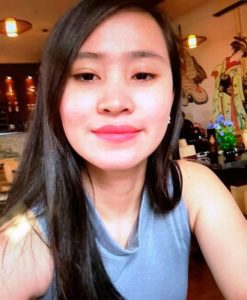
(Right: Jastine Jeryl Valdez a woman commemorated as part of the Bearing-Witness ceremony in Kippure, Ireland.)
We arrived to Kippure in the mid-afternoon as the January light was already fading and set up our centerpiece between two old trees. In silence we dropped into feeling the aliveness of the body and then we began taking turns reading the names. At times I caught myself leaning and thinking into the next thing on the schedule, feeling a need for control arising, expressing itself as physical contraction. Again and again I was carried back by the group, by our shared intention and capacity to be present in not knowing and bearing respectful witness. Some of the names we read were familiar, from high profile murder cases, others of these still unsolved. Many of them were typical Irish names, each one, though familiar and ordinary to the ear, representing an ocean of depth, beauty, and mystery. We took our time. One person recognized the name of a young woman of her town who had been murdered many years before, shot by an ex-boyfriend when she answered the door of her university lodgings. She hadn’t thought about her in a long time, but her story came back clearly. She remembered seeing this woman’s mother sitting beside her daughter’s body in the funeral home and holding her hand.
(Left: Anastasia Kriegel a woman commemorated as part of the ceremony in Kippure, Ireland.)
As we read down through the years, gradually the list began to include names that reflected the waves of people who came to live in Ireland during the economic boom, predominantly from Eastern Europe, China, and the Philippines. Marioara’s name was read. We sang «Calling Out to Hungry Hearts«, which is sung as part of the Gate of Sweet Nectar liturgy on Zen Peacemaker retreats. Hearing it and singing it before on retreat with Roshi Frank in Helsinki, it had felt like a call out from the heart into vast space, offering our loving presence to the ‘hungry ghosts’ in all their possibilities, all that’s lost and left behind, including those rejected aspects of ourselves, through endless time, as the words go.
The brilliant light of the setting sun was now bursting out from behind dark rain clouds, making shadows over the hills and catching the tips of the long reeds that grow in this boggy ground. It was very moving to sing this song together in a place of such tremendous beauty and suffering. Somehow, not knowing how, I felt as though the landscape itself was alive and responding. Afterwards, we added our own dedications, and placed our candles in the centerpiece. We made dedications to men and women, people who were sick or suffering, or who had died. Then one woman asked if she could recite Mary Oliver’s poem ‘Wild Geese’ and she searched for it on her phone but couldn’t find it, so between all of us we spoke it from memory. I spoke it through tears because we were standing right inside the poem’s invocations of the sun and the clear pebbles of the rain, the deep trees, the mountains and the rivers- to remember the life of what Mary Oliver had called the soft animal of the body, the female body which had been cruelly and violently stopped from loving what it loved.
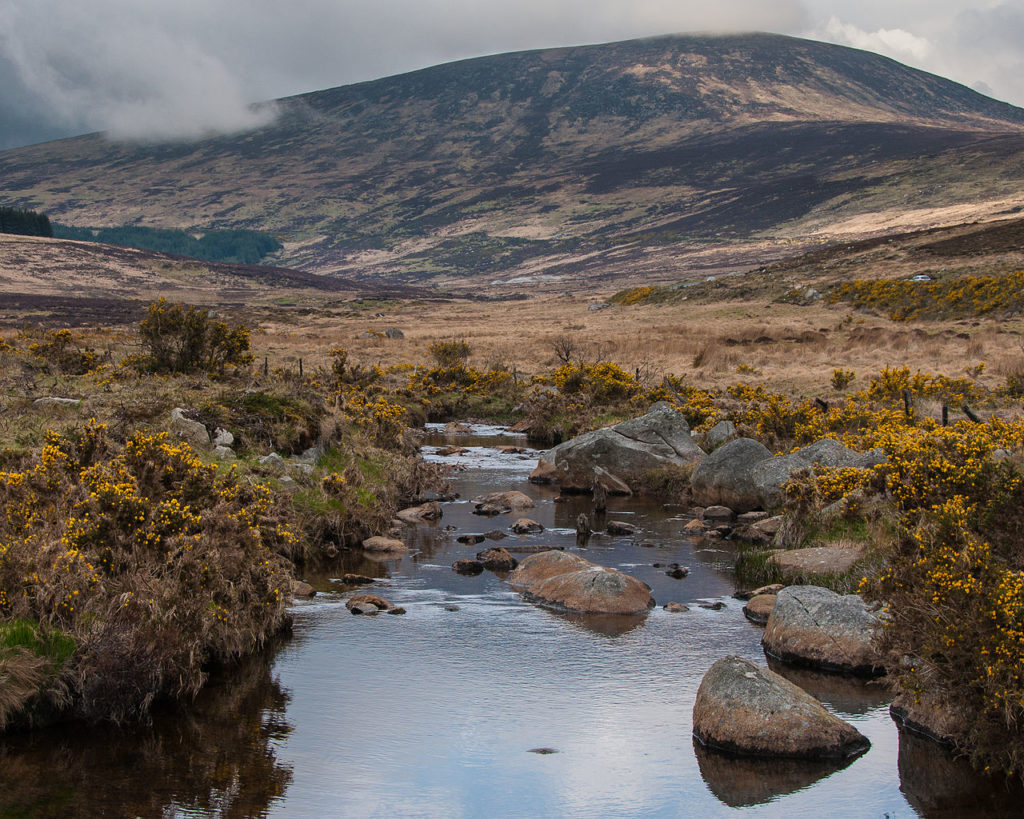
At the end of the day, back in the city, we would gather in council to express what was alive in us – speaking our own stories and those of others known to us- our gratitude for our commemoration together, and underneath everything a deep, shared sorrow. By now there were a few minutes of daylight left and we spent the time wending our own tracks into this landscape in its brilliant, dying light. As we were leaving again one woman said to me: it’s lonely and beautiful at the same time.
Afterwards I sat with how much hearing and speaking ‘Wild Geese’ had affected me at our ceremony, full of wonder for how a poem that was so familiar had sprung into new life. Through our ceremony in the landscape of Kippure I had experienced it as a response—a subversion of another secret, unwritten message to women, or anyone who is designated as ‘other’ in our society. The secret poem tells us that we do have to be good, that we cannot allow our true self to emerge and to be known, and we must never speak of our despair. It tells us that we can try to save this drowning, boiling world but ultimately we are as irrelevant as it is. We don’t belong to the ‘real’, which is to say, fabricated, world.
Here is what for me is Mary Oliver’s loving victory and answer.
Wild Geese
You do not have to be good.
You do not have to walk on your knees
for a hundred miles through the desert repenting.
You only have to let the soft animal of your body
love what it loves.
Tell me about despair, yours, and I will tell you mine.
Meanwhile the world goes on.
Meanwhile the sun and the clear pebbles of the rain
are moving across the landscapes,
over the prairies and the deep trees,
the mountains and the rivers.
Meanwhile the wild geese, high in the clean blue air,
are heading home again.
Whoever you are, no matter how lonely,
the world offers itself to your imagination,
calls to you like the wild geese, harsh and exciting –
over and over announcing your place
in the family of things.
– Mary Oliver, from Dream Work
This is humbly dedicated to the memory of Roshi Bernie Glassman with deepest gratitude, to the memories of Marioara Rostas, 1990 – 2008; the 225 women and girls murdered or missing and feared murdered in Ireland between 1996 and the end of 2018; the 15 children killed with their mothers; and Mary Oliver, 1935 – 2019.
About the Author:
 Niamh Barrett has been a member of Zen Peacemakers since 2018 and she has practiced Vipassana and Zen meditation since 2005. She lives in the seaside town of Bray, not far from Dublin, Ireland with her ten year-old daughter Róisín. She used to work as a documentary and TV producer but motherhood happily derailed that line of work and began a new period of learning, un-learning and juggling while facilitating mindfulness courses (MBSR), working with fellow mindfulness teachers through training and supervision, and working as a publications editor for a foster care charity. She feels joyfully drawn to explore the intersection of contemplative practice and social engagement as a path of practice with others, and she offers socially-engaged retreat days in the spirit of Zen Peacemakers. Her current offering and experiment in this vein is a project called Showing Up, www.showingup.ie
Niamh Barrett has been a member of Zen Peacemakers since 2018 and she has practiced Vipassana and Zen meditation since 2005. She lives in the seaside town of Bray, not far from Dublin, Ireland with her ten year-old daughter Róisín. She used to work as a documentary and TV producer but motherhood happily derailed that line of work and began a new period of learning, un-learning and juggling while facilitating mindfulness courses (MBSR), working with fellow mindfulness teachers through training and supervision, and working as a publications editor for a foster care charity. She feels joyfully drawn to explore the intersection of contemplative practice and social engagement as a path of practice with others, and she offers socially-engaged retreat days in the spirit of Zen Peacemakers. Her current offering and experiment in this vein is a project called Showing Up, www.showingup.ie

